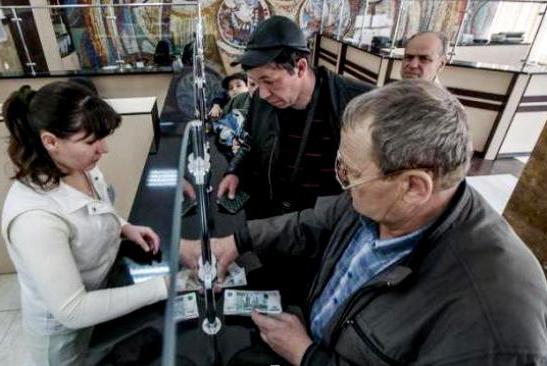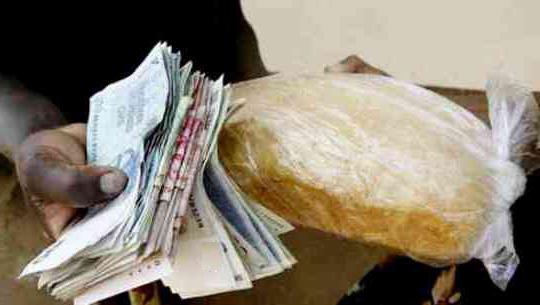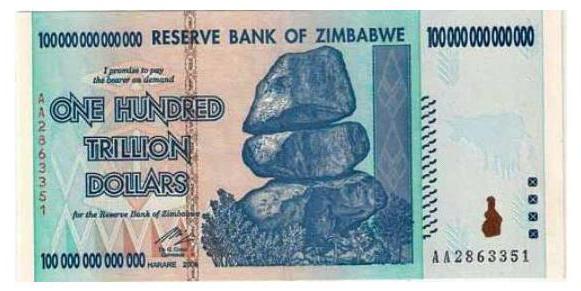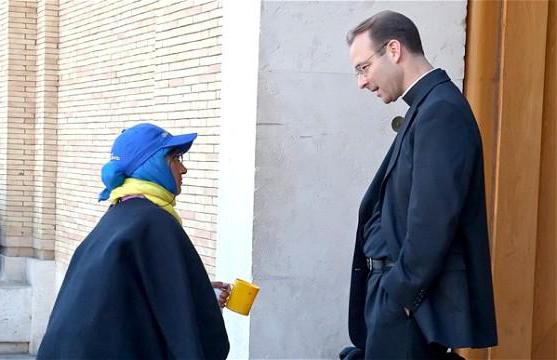Perhaps every sane person can more or less tolerably explain what inflation is. This is a rise in prices, a lack of money, a decrease in purchasing power, and, in general, a deterioration in living standards. Perhaps some are perplexed why the state will not print money so much that there is enough for everyone. After all, then people will start buying more goods, which means that financial turnover will improve, factories and factories will more actively earn, and in general everyone will feel good. In reality, such measures only exacerbate the situation. Why is this happening? What should the government do so that the country's economy is stable and the life of the people prosperous? We will try to explain all this with specific examples.

Why you can not print a lot of money
Two bright historical events help to better understand what inflation is. The first refers to the era when Columbus discovered America and Native American precious metals poured into Europe in an avalanche. Over the next couple of decades, incredibly many silver coins were minted (60 times more than before), and prices jumped 4 times. The second example concerns the times of the gold rush (second half of the 19th century).
At that time, gold mining in Australia and some states of America increased sharply, and prices around the world rose by 50%. That is, an increase in the money supply in both cases led to an increase in inflation, expressed in an increase in the value of goods and services. Translated from Latin, inflation is “bloating”, which, as applied to the economy, means increased (inflated) prices. However, if the manufacturer has set the price for his product above the previous one and at the same time improved its quality, increased functionality, and redesigned, this does not apply to inflation. For example, if a shoe maker sold dermatin shoes for 10 rubles, and then began to make them out of leather, equipped them with beautiful buckles and put up for sale for 30 rubles, this is normal. That is, inflation is a rise in prices for the same goods and services without the slightest change.
In principle, you can print extra money, but their amount should clearly correspond to the state’s gold and foreign exchange reserves.

What is a deflator?
Any country produces hundreds of types of goods, each of which has its own value. For dozens of reasons, it constantly jumps: for some goods it rises, for others it decreases. Therefore, it is impossible to explain what inflation is, focusing only on price increases. For this, the concept of “GDP deflator” exists in the economy, which gives an idea of the situation with country prices in total for all manufactured goods and manufactured services. Import is not taken into account here, only local production. Deflator is determined by dividing the nominal GDP (gross domestic product at the prices of the calculated year) by the real GDP (the same taking into account price increases). The result, translated into percentages, shows what level of inflation in the country, that is, how much the general price level has risen.

Other calculation methods
In addition to the deflator, economists calculate the inflation index, or CPI (consumer price index). To determine it, make up the average consumer basket that is, those goods (products, clothing, other) that the average citizen of the country acquires in a certain period of time (month, year). The CPI and deflator both measure inflation, but in different ways. So the CPI takes into account all the goods in the basket, including imports, takes into account only the goods in the basket, without affecting changes in prices for those left outside it, and as a result overestimates the final result. The inflation index is calculated by three methods: Laspeyres, Fisher and Paasche.
The Laspeyres Index is considered as follows:
IL = Σ (Qo x Pt): Σ (Qo x Po),
where Qo is all the goods in the consumer basket;
Pt - prices of the settlement year;
Po - base year prices.
This calculation shows income effect but does not take into account substitution effect the consumer of one product by another, more favorable for him at a price.
The Paasche index is considered as follows:
Ip = Σ (Qt x Pt): Σ (Qt x Po).
This calculation does not reflect the income effect and, in fact, is a deflator of GDP.
The Fisher Index is considered as follows:
IF = √ (IL X Ip), that is, the geometric mean of the Paache and Laspeyres indices.
In Russia, the Federal Statistics Service, or Rosstat, is engaged in these calculations. Inflation in the country and other economic indicators are not the only direction of the service. In addition, it provides data on the demographic and environmental situation in the country.

How much money
Some citizens believe that money has a price only at currency exchange points. However, the economics use the expressions “expensive money” and “cheap money”, which implies how many goods can be purchased for the same amount. For example, if for 10 rubles you can buy a kilogram of meat, plus a couple of kilograms of potatoes, and even a kilogram of oil in addition, they say that the chervonets is expensive. And if the same 10 rubles is barely enough only for potatoes, the chervonets immediately falls in price. That is, the question of what inflation is, you can answer: this is the depreciation of money. Thus, the concept of inflation includes an unreasonable improvement in the properties of a commodity, an increase in prices, an increase in the money supply (emission), and the depreciation of money.
Do I need to increase my salary?
Maybe in order to avoid inflation, you need to give people extra printed money, and let yourself grow prices? Here we get the following picture: if an entrepreneur raises employees' rates, production costs immediately increase. For example, a pair of shoes costs 10 rubles, of which 5 - the price of leather, 3 - the salary of workers and 2 - profit. With an increase in salary (rate, salary, hourly, any), for example, from 3 to 5 rubles, profit disappears, and without it production closes.
That is, raising the salary, it is necessary to simultaneously increase either the price of the goods or labor productivity, thus producing more goods. But this is directly related to demand. If you make, for example, a lot of the same shoes that no one needs, the company will simply go bankrupt. Thus, the question of what inflation is, you can give a complete answer: this is an increase in money supply, prices and wages, the depreciation of money, a decrease in purchasing power. Developing the idea, we can add: inflation is a crisis in the economy, in which monetary savings, investments are reduced, international economic relations are worsened, people's uncertainty about tomorrow and depression are growing.
In principle, raising the salary is possible and necessary, but the percentage of increase should always be economically justified.

Inflation rate
No state can keep prices in check for a long time, because it depends on the value of the world market, for example, oil, energy and so on. And the world market is constantly on the move. That is, prices are slowly rising all the time.
If they increase by 10% or less per year, inflation is called creeping or moderate. Economists see it as useful for further stimulating the development of production, its modernization and, ultimately, for improving living standards. The most acceptable inflation rate is 3-4%. That is how much it has been in recent years in the EU countries.
If prices soar up to 50% per year, inflation is called galloping. Countries in which it is fixed must urgently take anti-inflationary measures. Galloping inflation in Russia was observed in 1992-1993, when the consumer price index soared up by an average of 111%.
If prices generally get out of control and rise by a thousand or even tens of thousands of percent per year, this economic situation is called hyperinflation. Such situations in history occurred only during wars, revolutions, coups. For example, in Zimbabwe, at one time in circulation were notes in the amount of 100 trillion local dollars, for which you could buy only a loaf of bread.

Forms of inflation
Above, we met with explicit or open inflation, which implies a rise in prices and all the troubles associated with it. But there is also hidden inflation, in which prices can be stable or fall, and wages rise. Moreover, the country has a shortage of goods. It is simple to explain this concept: there are not enough goods and services, although there is a demand for them, and people have money to acquire these goods and services. This situation was observed in the USSR, when in order to buy many things it was necessary to register in the queue. This happens when state officials set prices, not market relations, and also when the economy is planned, not market. In other words, not only inflation and prices are connected, but also the market mechanisms of economic management, regulation, demand, and supply.
In contrast to inflation, there is the concept of deflation when prices drop for a short time. For example, at the end of summer, few needed beach goods are sold cheaper. Or another example: in the fall, immediately after harvesting, agricultural products are cheaper on the market. Such cheapening of goods has no relation to hidden inflation.

Types of Inflation
Depending on the reasons that gave rise to it, and on the nature of its course, inflation happens:
- balanced (prices for goods rise, but do not change relative to each other);
- unbalanced
- predicted (pre-calculated and expected);
- unpredictable;
- demand inflation (same deficit);
- proposals or costs (in this case, either the prices of goods rise, or the prices do not change, but production falls);
- official inflation (Rosstat provides these data);
- real (in many media reports are regularly issued that real inflation is always higher than official);
- Imported (caused by the instability of exchange rates).
Control measures
Almost all leading economists agree that zero inflation is dangerous for the further development of the economy. That is, its moderate growth rate must exist. But with galloping, and even more so with hyperinflation, immediate measures must be taken that depend on the causes that created the economic crisis. Thus, a decrease in inflation is possible with the following actions of the government:
1. Monetary reform, implying:
- the introduction of new money instead of depreciated;
- devaluation (depreciation of the national currency);
- denomination (reduction of zeros in price tags and salaries. For example, instead of a million rubles, only a hundred are issued for hands, respectively, prices also change).
2. Regulation of income, implying:
- in respect of wages, a decline in union rights;
- freezing or reducing salaries;
- price regulation.
3. Deflation policy, which implies:
- tax increase;
- increase in credit interest rates;
- decrease in government spending.
Inflation in Russia
In our country, the economic crisis, having experienced a sharp jump in the early 90s of the last century, gradually decreased and by 2011 reached its minimum - 6.1%. Since 2012, the inflation rate has crept up again, amounting to 12.9% in 2015. These data were provided by Rosstat. Inflation in the country is growing due to a decrease in the purchasing power of the national currency - the ruble, which leads to higher prices. The second reason is that the nominal indicators of economic activity exceed their real content. In 2016, a further increase in inflation is expected, which is primarily due to economic sanctions against Russia, as well as a decrease in oil prices. Unpleasant for Russians, a “bonus” to this is the fact that Iran is again in the energy market.In order to lure buyers of oil to him, he will try to lower its price to a possible minimum.
Consequences of inflation
Although leading economists believe that small (up to 4%) inflation has a beneficial effect on the overall development of the economy, this phenomenon has a lot of negative consequences:
- decrease in population incomes;
- widening the gap between rich and poor;
- decrease in motivation to work;
- reduced opportunities for accumulating funds;
- the fragility of the position of power, which can lead to a political coup;
- a decrease in the quality of goods (manufacturers' interest in this disappears);
- deterioration of living standards of the bulk of the country's inhabitants.

